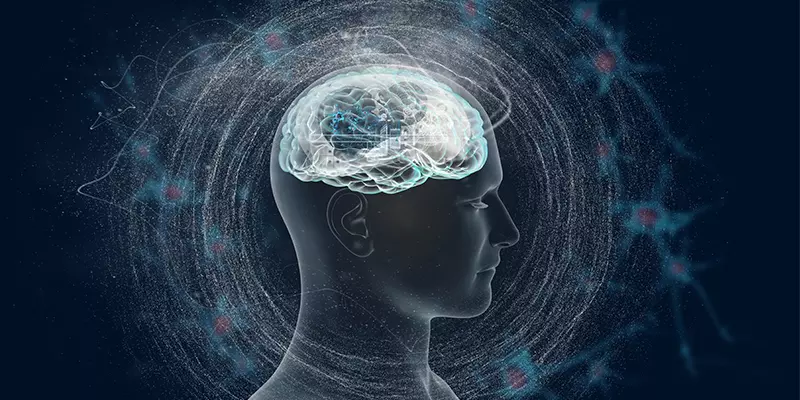
Turns out that the old adage “’Tis better to give than receive” is more than a slogan—it’s a concept increasingly supported by science. There is now a significant (and still growing) amount of research to support the notion that the many benefits of helping others reach beyond the recipient, right back to the giver. In fact, giving consistently can positively impact one’s overall quality of life, both in the moment and over the long haul.
From improved physical and emotional well-being to lowered risks of dementia and depression, giving back offers a bevy of boons across all age groups. Even better, reaping these rewards doesn’t necessarily require a gargantuan effort, tons of time, or large sums of money; minor efforts can offer major payback, too. Giving back—whether donating, helping a friend or volunteering—helps boost the brain by releasing neurochemicals associated with feelings of happiness, thus improving mental health and making everyone feel a bit more joyful.
Giving back—whether donating, helping a friend or volunteering—helps boost the brain by releasing neurochemicals associated with feelings of happiness, thus improving mental health and making everyone feel a bit more joyful. Click To TweetGiving Back Is the Gift That Keeps On Giving
Has anyone ever encouraged you to “get outside yourself” when you’re feeling down? They may be on to something: According to a 2021 survey of 2,000 U.S. adults conducted by OnePoll on behalf of Walgreens, 9 of 10 respondents reported feeling better about themselves when giving to a charity. Such good deeds contributed to an array of positive feelings, including “happy” (according to 92% of respondents), “relaxed” (77%), and “healthy” (71%).
However, unlike other positive feelings, which may prove fleeting, these can persist over time, lingering after the giving event itself. In 2010, The Journal of Social Psychology noted a study in which 86 participants ranked their life satisfaction and then split into 3 groups. One group was instructed to perform an act of kindness every day for 10 days. Afterward, researchers found that this group reported significantly increased levels of happiness.
There’s a scientific basis for this sensation. The Cleveland Clinic notes that scientists, examining the functional MRIs of subjects who gave to charities, discovered that giving back stimulates the mesolimbic pathway, which is the reward center in the brain. That, in turn, releases endorphins, producing a feeling that is sometimes called the “helper’s high.”
Finally, giving back is an act that seems to perpetuate itself. In a 2011 study, researchers found that subjects were happier when they were asked to recall a time when they had purchased something for someone else—regardless of the gift’s cost—versus buying a gift for themselves. And the happier they felt about giving in the past, the more likely they would be to spend money on someone else in the future. That may be because the joy of giving doesn’t wane over time; as one experiment found, unlike many other pleasures, giving doesn’t lose its luster even through repetition.
The Physical and Emotional Benefits of Volunteering
While giving back can entail anything from helping a friend to writing a check, many choose to donate their time via volunteering. This practice has been researched at length, including in a study published in 2020 in the Journal of Happiness Studies that tracked 70,000 participants in the United Kingdom over an 18-year period. Results, reported by The Greater Good Science Center at the University of California, Berkeley, showed that those with volunteering experience in the past year “were more satisfied with their lives and rated their overall health as better” than non-volunteers. Greater frequency of volunteering (at least once monthly) ushered in bigger benefits, versus sporadic engagement. Researchers were even able to pin a price value on these efforts, estimating that, for those with a typical middle-class income, volunteering offered the feel-good equivalent of an extra $1,100 per year.
A comprehensive online survey, conducted in 2010 among 4,582 American adults, found that volunteering offered a dizzying array of benefits for volunteers, including:
- Higher levels of life satisfaction, a greater sense of control over life, and feeling physically and emotionally healthier
- Stronger relationships with and more positive attitudes toward employers and colleagues, when volunteering through the workplace
- Feeling more in control of their own health, as well as higher ratings of their state of and satisfaction with their current physical health (including their physical abilities and perceived pain thresholds)
- A healthier BMI, with a significantly lower proportion of volunteers identified as obese
- Improved well‐being and a deeper sense of purpose in life
Ultimately, the survey found, volunteers tend to draw a connection between their volunteer work and an improved emotional state, and they’re significantly more likely to rate their emotional well‐being in a positive light. They’re also more likely to have a brighter life outlook, including a greater sense of meaning—while they’re less apt to experience periods of isolation and despair or experience negative emotions. Most applaud the “interpersonal and societal benefits” of volunteering, including the ability to “help strengthen their community on a local and national level.”
The advantages of volunteering also reach across age groups, with the survey showing that seniors, in particular, can maintain more positive feelings about getting older; are less likely to develop a chronic condition, especially asthma; and are less likely to experience negative sentiments like anxiety, hopelessness, and helplessness. The Greater Good Science Center notes that younger and older demographics profit from volunteering: Ages 16 to 24 and 55 to 74 were especially likely to reap benefits, possibly because these opportunities teach important life skills and help foster interpersonal connections.
Acts of Service Trigger Happiness Neurochemicals
According to the Detroit Free Press, even thinking about helping others can trigger a flood of feel-good chemicals in the brain, such as dopamine, oxytocin, and endorphins that block pain signals. There are other neurotransmitters at work, too: Experts at Cedars-Sinai find that being kind to others can rev up levels of serotonin, which helps regulate mood and can also “increase levels of an endorphin-like chemical in the body called substance P,” which assists in pain relief.
Indeed, studies have shown that pain tolerance positively predicts social network size, since oxytocin, vasopressin, and endocannabinoids are associated with social behavior and offer analgesic effects. Other studies have noted that these positive results aren’t simply imagined, as those who volunteer showed better physical health in both self-reported and expert-assessed categories. They also demonstrated better mental health and performed better on cognitive tasks.
7 Ways to Give Back to Get the “Helper’s High”
With all the scientific evidence supporting the physical, cognitive, and mental health benefits of giving, make it a priority in your life. Some simple ways to get started include:
- Participating in a fundraiser
- Volunteering at a local senior center
- Performing a random act of kindness
- Donating food to a local food bank
- Organizing a clean-up at a local park or beach
- Donating blood
- Offering to mentor someone
Try a variety of giving options until you find something that brings you joy.
Anxiety, depression, and other mental health issues can’t wait. At Amen Clinics, we’re here for you. We offer in-clinic brain scanning and appointments, as well as mental telehealth, remote clinical evaluations, and video therapy for adults, children, and couples. Find out more by speaking to a specialist today at 888-288-9834 or visit our contact page here.





I am currently helping others, and consequently myself, after having discovered the WTM website, World Transformation Movement. This deals with the human condition, the conflict between our instinctive and conscious mind.
Being selfless helping others is helping transform the world.
Dr. Amen is definitely a part of my personal journey and healing as well.
For me, helping others has been the key to increasing my brain health.
Thanks to everyone who understands this vital human principle.
Comment by Bob — December 31, 2021 @ 4:48 AM
This is so true! I have always been a giver and enjoyed helping others. It’s in the fabric of who I am. It just gives me joy to help people with the talents and skills given to me from God. I believe that “ to whom much is given, much is expected.”
Comment by Mark — December 31, 2021 @ 8:14 AM
Luke 6:38 sums it up nicely. “Give, and it shall be given unto you, a good measure, pressed down and shaken together shall be poured onto your lap. For with the measure you use it will be measured to you “
Comment by Sue — December 31, 2021 @ 8:26 AM
It is true. “Giving back” is truly a self lifting event. Even a smile or a “Hello” or a moment of listening. And the focus is away for a moment from our own needs.
Comment by Alan Brill — December 31, 2021 @ 11:57 AM
Do you have recommendations on how to discover areas in a community that need or have volunteer opportunities.
TY
Comment by Clem Geiger — January 11, 2022 @ 6:55 AM
I totally agree with this! After starting a quilting ministry and giving my workmanship and teaching others how to sew, I have been able to use my God given gifts to give joy to others. Alas I get more happiness than they! It has gotten me through losing loved ones in the past few years.
Comment by Suzanne Loo — January 19, 2022 @ 7:02 AM